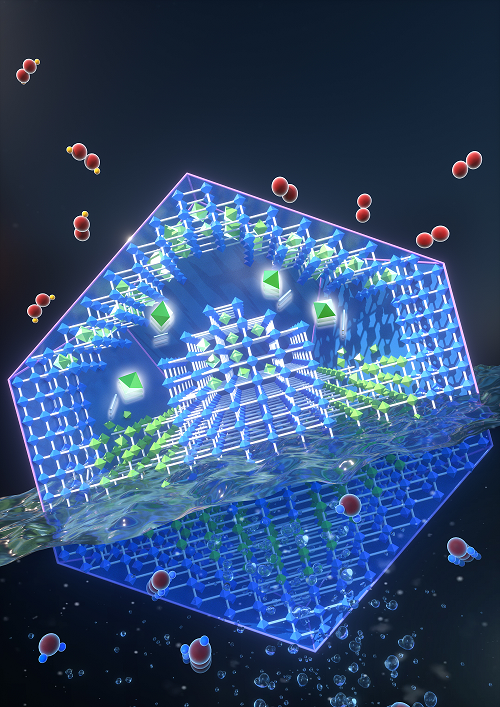A research team led by Professor Jeongku Kang of the Department of Materials Science & Engineering developed an energy storage material for Li-O2 batteries that control electrocatalysts and stabilize the movements of reactants at an atomic level. This new technology can produce energy densities ten times higher than conventional lithium-ion batteries, showing high potential for applications in eco-friendly electric cars.

The joint research with Professor Kyungmin Choi of Sookmyung Women’s University Department of Chemical and Biological Engineering, was published in Advanced Science on May 6 under the title “Autogenous Production and Stabilization of Highly Loaded Sub-Nanometric Particles within Multishell Hollow Metal-Organic Frameworks and Their Utilization for High Performance in Li-O2 Batteries”.
Sub-nanometric particles (SNPs) in atomic cluster sizes have been promising in fields such as full atom-to-atom utilization. However, its production and stabilization remained challenging. As a solution, the research team synthesized and preserved SNPs at high mass loadings within multishell hollow metal-organic frameworks (MOF). MOFs are porous solids composed of metal ions coordinated to organic ligands, and have wide applications due to their extraordinarily large internal surface area.
First, water-decomposable and water-stable MOFs are stacked to build multiple layers. Utilizing controlled hydrogen bonding affinity, the water molecules are isolated and selectively sieved through the water-stable MOFs. Then, they are transferred one by one into water-decomposable MOFs. The transmission of water molecules via controlled hydrogen bonding affinity is a key step to get SNPs from various alternating MOF layers, which embed the SNPs into the hollow MOFs. The hollow interspaces minimize transport resistance and the multishell stabilizes SNP movements. The research team demonstrated that these SNP-embedded MOFs with up to five shells have higher electrochemical performances, including high volumetric capacities and low overpotentials in Li-air batteries.
Professor Kang explained that “the technology to produce and stabilize electrocatalysts using atomic-level hollow interspaces of MOFs can be diversified depending on the types of catalysts and hundreds of thousands of MOF types, meaning that it can be applied to many other fields of materials studies.”

